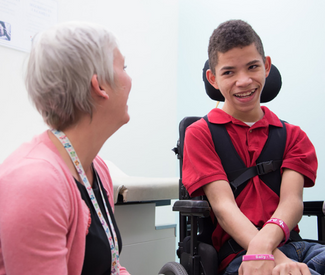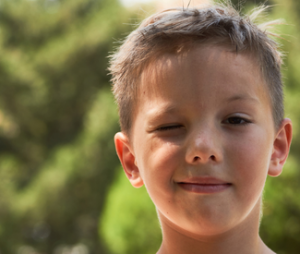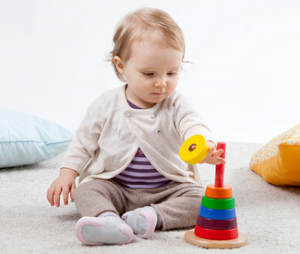Dystonia – the third most common movement disorder – affects about a quarter of a million people in the United States. It affects a wide range of age groups and ethnicities. Children can experience dystonia along with adults.
Let’s discuss what dystonia is, the various types of dystonia, how it’s treated, and the work researchers currently undertake to discover a cure.
What is dystonia?
Dystonia is a movement disorder that causes the muscles to contract and spasm involuntarily.
Some facts about dystonia are as follows:
- The neurological mechanism that makes muscles relax when they are not in use does not function correctly,
causing opposing muscles to contract simultaneously. - Can affect people of all ages and backgrounds.
- Elements shared by the different types of dystonia: repetitive, patterned, and often twisting, involuntary
muscle contractions. - Disrupts the nervous system’s ability to effectively communicate between the brain and the muscles.
- May affect one muscle, a group of muscles, or all muscles.
The root cause of dystonia is dysfunction of the section of the brain called the basal ganglia. The basal ganglia are responsible for the regulation of:
- voluntary motor control
- emotional functions
- cognitive
- bruxism
- eye movements

The basal ganglia, when they are functioning properly, also prevent unwanted movements, which accounts for the involuntary twisting and other abnormal movements often seen in dystonia patients.
What are the different types of dystonia?
Neurologists have identified a number of varieties of dystonia. Diagnosing the type of dystonia is important as it implies distinct treatment modalities:
- Primary (idiopathic). This means that the dystonia has no secondary cause. There are no identified underlying conditions that cause the symptoms. Primary dystonia often develops later in life.
- Secondary (symptomatic). This means there is an identified underlying cause triggering symptoms. Examples of underlying triggers might be environmental (manganese or carbon monoxide, for instance) or neurological conditions like cerebral palsy.
- Dystonia-plus Syndromes. This refers to dystonia caused by neurochemical disorders like myoclonus-dystonia and rapid-onset dystonia-parkinsonism (RDP).
- Heredodegenerative Dystonia. This refers to dystonia resulting from other neurodegenerative conditions such as Huntington’s disease, Wilson’s disease, and Rett’s syndrome that have a known genetic (hereditary) component.
What are the symptoms of dystonia?
The symptoms seen in dystonia patients will vary widely depending on the type of the condition and other factors. Typical symptoms include:
- Stiff neck
- Eye irritation
- Sensitivity to light
- Subtle facial spasms
- Cramping of the extremities
- Abnormal gait
- Twisting posture
- Involuntary rhythmic movements
Doctors – especially those who don’t specialize in treating neurological disorders – may often attribute the symptoms seen in dystonia to stress or other psychological conditions, not to the physiological dysfunction of the basal ganglia which is the true cause.
The special training and background knowledge required to properly diagnose dystonia is the reason that seeking the care of an experienced neurologist is important if you suspect that you or a loved one might have the condition.
How do neurologists treat dystonia?
There is no cure for dystonia at the present time. Researchers are still exploring potential permanent treatment options, but at the moment therapy is limited to reducing the impact of symptoms.
Current treatments for dystonia, which again focus on mitigating symptoms, include:
- Physical, Occupational, and Speech therapies
- Botulinum Toxin (Botox) injections
- Baclofen Pump implants
- Oral Medications
- Baclofen and Botox are most effective when used in combination with physical, occupational, and/or
- Speech therapies
Clinical trials are a critical part of the ongoing research process. They enable scientists to test potential breakthrough diagnostic procedures and treatments for hard-to-treat neurological diseases.
For instance, this ongoing Mayo Clinic study close to home in Jacksonville is currently investigating the association between spasmodic dysphonia (SD) and other conditions like dystonia.
If you have the ability and qualify, you can contribute to the search for dystonia diagnostics, treatments, and cures by joining a clinical trial – while also potentially benefiting from landmark new treatments under the care of leading experts.
Learn more about how clinical trials work, the role they play in innovating new therapies, and the potential benefits for individual participants.
Contact Child Neurology Center of Northwest Florida to learn more about dystonia
We specialize in treating neurological disorders affecting children such as dystonia in our Northwest Florida clinic. We utilize in our clinical practice the most advanced, modern therapeutic strategies.
If you or a loved one are affected by dystonia and would like to explore treatment options, or to learn more about dystonia and its impact on public health, contact Child Neurology Center of Northwest Florida.





